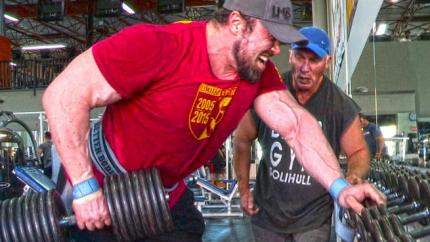Bigger and Badder


Partlow: Advice on Bringing Up a Weak Body Part
One of the biggest challenges people face while trying to sculpt their own ideal physique is that not all body parts are created equal. Unless you’ve got one-in-a-million genetics, there’s probably a body part you struggle with developing. If you’re a bodybuilder, this is most likely going to be something you will deal with for as long as you train. It could be chest, quads, or biceps. For a great many, it’s calves. Actually, if you only have one weak body part, you’re doing pretty well compared to most people.
So the question remains: What do you do about it?
Well, there are a few things to consider when making a plan of attack on weak body parts. The first thing you must understand is that you’re born with a limited number of muscle cells.
If you relatively fewer muscle cells in your biceps, for example, then your biceps will be extremely difficult to improve. They will get bigger and stronger, and you can definitely make serious improvements. However, they’ll always be a trouble spot. So you’ll have to really work hard and be patient with very stubborn muscles. Think in terms of years, not months. It will definitely be a marathon.
The next thing to consider is that weak muscle groups can also be the product of poor mechanical leverage. For example, you may be structured in a way that makes you very triceps-dominant when you press. You might be the type that needs more chest, but it’s your triceps and shoulders that keep growing. That can mean that your chest isn’t being the prime mover when you press. Perhaps your triceps and front delts keep taking the load away. You may have to really get fussy when it comes to making sure your form is just perfect to put the stress where you need it. This can also mean that you need to depart from the usual practice of emphasizing presses, and work with more flye movements or alternate press variations that allow you to feel the chest more. Perhaps you actually have to shorten the range of motion to keep stress on the target muscle. It all depends on how your body moves through the motions.

Next, I’d look to train muscle groups with higher frequency. So if you have a weak body part you want to hit, try to prioritize it. I would lay out my split starting with that muscle being trained two or three times per week. Then arrange your other parts around that.
Make sure you always have at least one day off per week; taking a day off before or after training weak points is usually a good idea. Make sure you keep the volume (sets per workout) from getting too high though, as frequency adds up fast. Let’s say you normally do 10 hard sets of biceps once per week; do 6 sets twice per week instead. That’s 12 total sets instead of 10, plus you’re increasing frequency from one to two workouts per week. Of course, these same numbers could be tweaked in a bunch of different ways—maybe 10 hard sets one day and 2 hard sets later in the week, staggering the workload. There are many options out there, so try mixing things up this way and see how that stubborn muscle responds.

